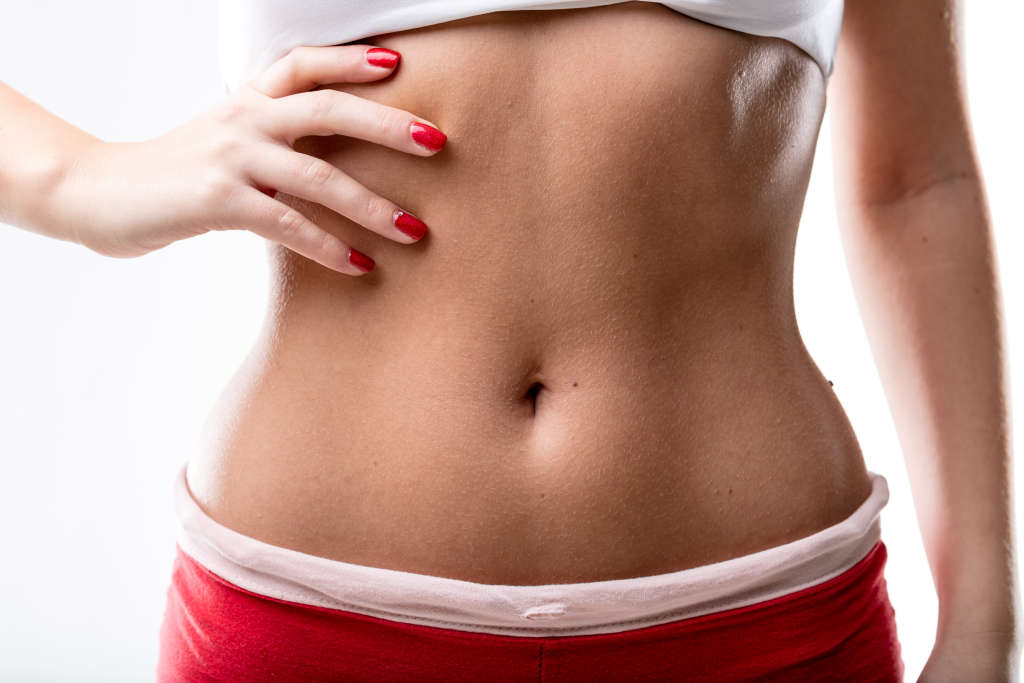
Liposuction (Liposculpture)
What does the surgery involve?
Suction-assisted liposuction involves the use of a cannula (a thin, hollow tube) to manually loosen and remove fat to create a nicer shape within the body area being treated. The cannula is inserted through tiny incisions in the skin and suction is applied to remove fat from the body. It takes between one to three hours to perform liposuction depending on the size of the treatment area. The tiny incisions are closed with a small dissolvable stitch and a waterproof plaster applied. You will need to wear compression garments to help shape the area for 4 weeks following your surgery. Liposuction procedures can be carried out under local (you are awake during the procedure) or general anaesthetic (you are fully asleep). The choice depends upon your preference, combined with the size of the areas to be treated and the amount of fat to be removed. If only a small amount of fat is removed, a local anaesthetic may be all that is needed. The area where the fat is removed is not usually painful. Patients tend to describe it as bruised. You may need to take some simple painkillers for a day or so afterwards for any discomfort. Often, you only need to be in hospital for a few hours. an overnight stay maybe necessary if a large amount of fat is removed (or liposuction is combined with another procedure).

































































What are the risks and side effects of surgery?
Having cosmetic surgery can be a very positive experience. Complications are infrequent and usually minor. However, no surgery is without risk and it is important that you are given a clear picture.
Scars
Scars are very small and hidden in a skin crease. They should be barely perceptible. However some people heal with thick scars and this can make them more noticeable.
Bruising and swelling
This is very common and bruising may take a few of weeks to settle.
Infection
This is rare but you may require antibiotics if there are any concerns.
Contour irregularities
It is possible to have indentations or laxity of the skin following this procedure. Massaging should resolve this but occasional further surgery may be required to correct this.
Further liposuction
This may be necessary to give the desired result. Only a certain amount of fat is removed at one operation (4-5 litres). To take more than 4 litres of fat at one session can put you at risk of fluid shifts and blood loss. If you desire more liposuction then a second procedure gives the flexibility to add this.
Damage to internal structures
Liposuction is performed in the superficial layer of fat underneath the skin. As the cannulae are blunt they are very unlikely to damage any important structures. However if there is a hernia or weakness of the abdomen then it is possible to damage structures. However, this is very unlikely.
Damage to internal structures
Liposuction is performed in the superficial layer of fat underneath the skin. As the cannulae are blunt they are very unlikely to damage any important structures. However if there is a hernia or weakness of the abdomen then it is possible to damage structures. However, this is very unlikely.
DVT/PE/fat embolus
Following any surgical procedure it is possible to develop a blood clot in your legs, which could potentially break off and move to your lungs. If the blood clot is large enough it could prove fatal. In order to reduce any risks of this we give you special stockings to wear in bed and a blood thinning injection if you are not mobile.
All the risks will be discussed in detail at your consultation. However, if you have further questions or concerns, do not hesitate to discuss this me. Decisions about cosmetic surgery should never be rushed.
What is the estimated time for recovery, absence from work and return to usual activities?
Recovery times vary from one person to another but most patients take 1 -2 weeks off work. You can drive after 1-2 weeks and can return to normal activities by 4 weeks. If you have any concerns during this period, do contact the hospital team for advice.
- Liposuction Compression Garments
- Pre-Operation Instructions
- Post-Operation Instructions for Abdominoplasty Procedure
I hope you find this information useful. If you have any questions or require a little more information then please do not hesitate to contact me.
Anne Dancey
Plastic and Reconstructive Surgeon FRCS(Plast), MBChB(Hons), MMedSci(Hons) and MCh(PASP)




